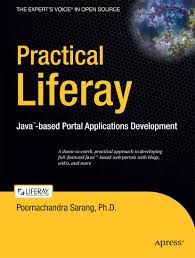White Paper: Practical Liferay: A Deep Dive into the Powerful Digital Experience Platform
Abstract
Liferay, a leading open-source digital experience platform (DXP), empowers organizations to create engaging and personalized digital experiences. This white paper, inspired by Poornachandra's "Practical Liferay," delves into the core concepts, features, and best practices for leveraging Liferay to build robust and scalable web applications. We'll explore its application in various domains, such as e-commerce, intranets, and customer portals.
Introduction
Liferay's flexibility and extensibility make it a popular choice for organizations seeking to build customized digital experiences. This white paper aims to provide a comprehensive overview of Liferay's key features, best practices, and real-world applications. By understanding the fundamentals of Liferay and its ecosystem, you can effectively harness its power to deliver exceptional digital experiences.
Core Concepts of Liferay
- Portlets: Reusable web components that can be combined to create dynamic web pages.
- Themes: Customizable layouts and designs for your Liferay portal.
- Layouts: Structures that define the arrangement of portlets on a page.
- Web Content Management (WCM): Tools for creating, managing, and publishing content.
- User Management: Features for managing users, roles, and permissions.
- Search: Powerful search capabilities to help users find information quickly.
Key Features of Liferay
- Drag-and-Drop Interface: Easily create and customize web pages without writing code.
- Workflow Engine: Automate business processes and improve efficiency.
- Integration Capabilities: Integrate with other systems and applications using APIs and connectors.
- Security: Robust security features to protect your digital assets.
- Scalability: Designed to handle high traffic and large-scale deployments.
Best Practices for Liferay Development
- Follow Liferay's Best Practices: Adhere to Liferay's guidelines for development, deployment, and security.
- Leverage Liferay's Extensibility: Extend Liferay's functionality with hooks, services, and portlets.
- Utilize Liferay's Theme Engine: Customize the look and feel of your portal with themes.
- Optimize Performance: Implement caching, compression, and other performance optimization techniques.
- Secure Your Liferay Instance: Keep your Liferay installation up-to-date with the latest security patches.
- Test Thoroughly: Conduct thorough testing to ensure the quality and stability of your Liferay applications.
Real-World Applications of Liferay
- Intranets: Build customized intranets to improve employee collaboration and productivity.
- E-commerce: Create powerful e-commerce platforms with advanced features like product catalogs, shopping carts, and payment gateways.
- Customer Portals: Provide self-service portals for customers to access information and manage their accounts.
- Digital Marketing: Implement digital marketing campaigns, including email marketing, social media integration, and content marketing.
Conclusion
Liferay is a versatile and powerful platform for building a wide range of digital experiences. By understanding its core concepts and best practices, you can effectively leverage its capabilities to create innovative and engaging applications. By following the guidance provided in "Practical Liferay" and this white paper, you can unlock the full potential of Liferay and achieve your digital goals.
References
- Poornachandra, P. (2016). Practical Liferay: A Developer's Guide. Packt Publishing.
- Liferay Documentation: https://community.liferay.com/
By combining the theoretical knowledge from "Practical Liferay" with hands-on experience and continuous learning, you can become a proficient Liferay developer and build exceptional digital experiences.



